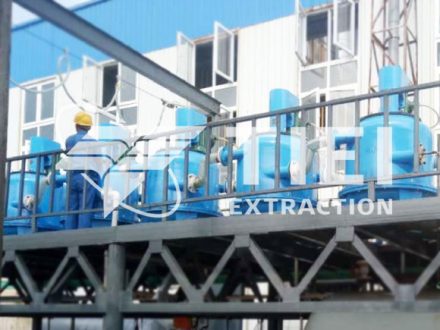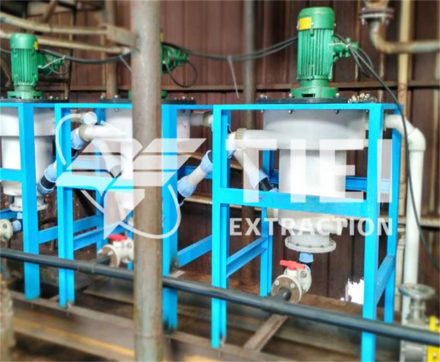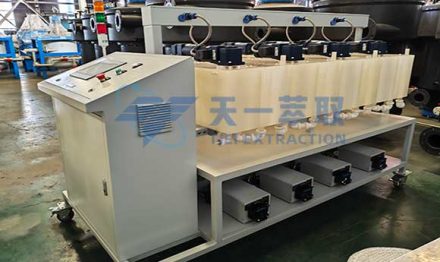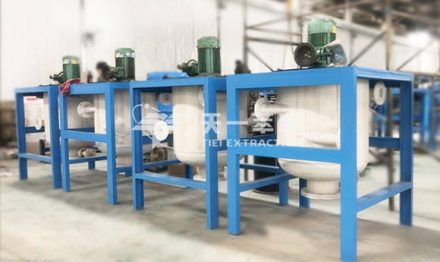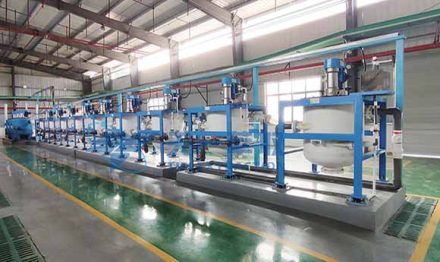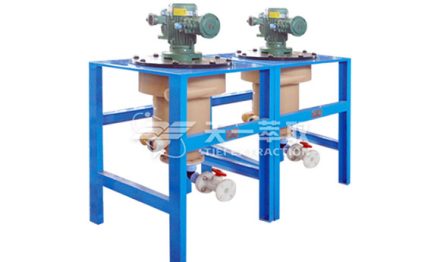Centrifugal extractors mix and separate in one unit. Two liquids will be intensively mixed between the spinning rotor and the stationary housing at speeds up to 6000 RPM. This develops great surfaces for an ideal mass transfer from the aqueous phase into the organic phase. At 200–2000 g, both phases will be separated again. Centrifugal extractors minimize the solvent in the process, optimize the product load in the solvent and extract the aqueous phase completely. Counter current and cross current extractions are easily established.
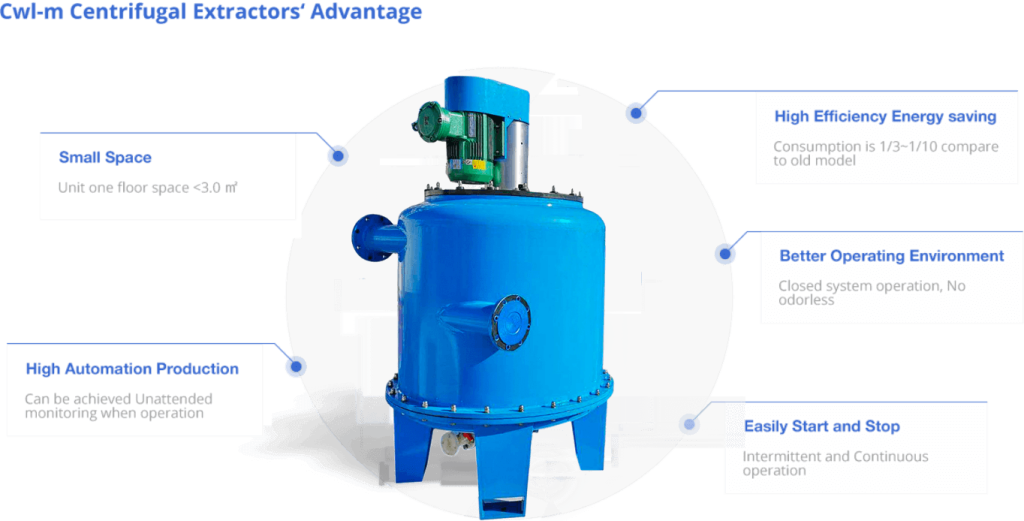
Liquid-liquid extraction has several advantages over more complex methods. For one, liquid-liquid extraction is easy to utilize and quite straightforward; all that is required is an organic and aqueous solvent, something to mix them in, and then something to isolate the layers. This last step can be done with a pipette for small volumes or out the bottom of a separatory funnel for larger volumes. Due to these factors, liquid-liquid extraction is a very common extraction method and is one of the first methods taught to undergraduate chemistry students. It is used extensively at small and large scales in the research, petrochemical, food, pharmaceutical, and hydrometallurgical industries.
There are a few disadvantages to this process. This extraction is effective only when the desired analytes preferentially dissolves in the organic solvent. As such, very polar molecules are incompatible with typical liquid-liquid extractions protocols. It can sometimes be tedious to separate the two layers accurately and emulsions can sometimes form. These emulsions need extra time and effort to remove, reducing laboratory efficiency. The requirement for large amounts of solvents can be an environmental concern as well as an explosive hazard, particularly at larger scales as seen in the industry. The selectivity of liquid-liquid extraction is also quite low, as all organic-soluble and not overly-polar compounds move into the organic layer. If a pure product is desired, further purification is typically required after liquid-liquid extraction.
Liquid/Liquid Extraction Work Principle
1) Mixed mass transfer process
The two-phase solutions enter into the mixing area of inside the shell from the two phase inlet ,which in a certain proportion to make the two phases mix and disperse quickly and complete the mixing mass transfer process.
2)Two phase separation process
The mixed liquid enters the drum under the action of the vortex disc or feeder. Under the action of centrifugal force, the heavy phase liquid gradually moves away
from the center of the drum and towards the drum wall in the upward flow process; The light phase liquid with low density gradually moves away from the drum wall and towards the center. The clarified two-phase liquid finally enters the collection chamber through their respective weir plates and flows out from the light phase outlet to complete the two-phase separation process.

